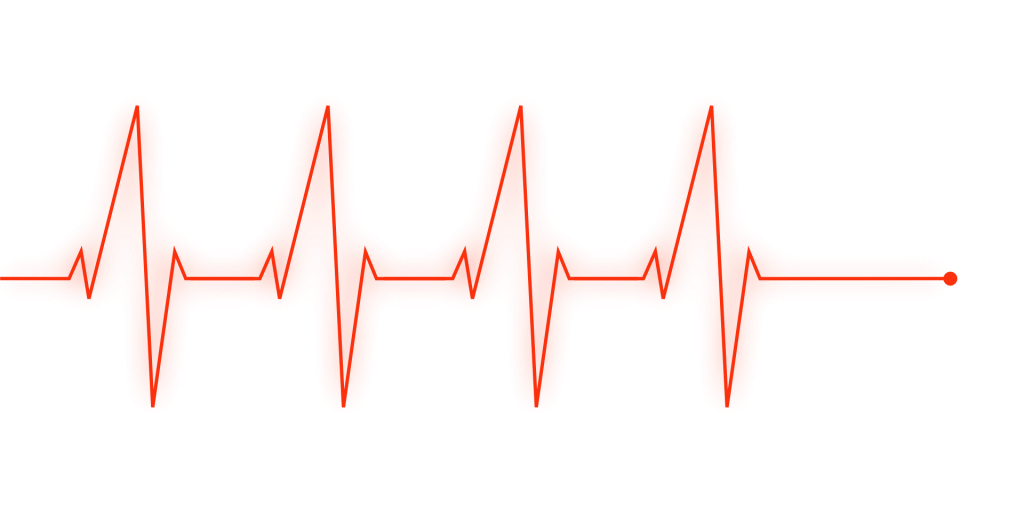Have you ever asked, “what is telemetry in medicine?” Have you seen others working in medical telemetry and thought this would be a great path for you?
Wireless medical telemetry offers new avenues for patient evaluation, treatment, and monitoring. Patients no longer need hospitalization for all cardiac monitoring tests.
They can go home and go about their normal routine. Their provider can watch their cardiac response and adjust treatment.
In-patients may also have less-restrictive cardiac monitoring while in the hospital. All these options rely on trained nurses and/or medical personnel. They interpret the cardiac rhythms and relay that information to the provider.
As you read this article, you will find learn about what these monitors can and can’t do for the patient.
What Is Wireless Medical Telemetry?
The term, telemetry, refers to the process used to track a physiological function. Special instruments record data and send it via radio signals to a receiving station. The signal is then decoded and recorded.
Cardiac monitoring via telemetry leads has been used in medicine for decades. The technology now includes the measurement of blood pressures and heart rates. This monitoring may take place in the hospital or from remote locations.
Why Is a Patient on Telemetry?
Patients in a hospital setting may wear a wireless cardiac telemetry lead. This allows for continuous heart monitoring.
Since the apparatus is wireless, the patient has more freedom to move around. Now medical providers can watch how the patient’s heart responds to activity.
Mobile Cardiac Telemetry (MCT) provides real-time cardiac monitoring on an outpatient basis. The patient wears the MCT 24 hours a day for as long as 30 days. The provider can see a comprehensive view of the patient’s cardiac patterns.
Providers may order wireless cardiac telemetry for many different reasons.
- Complaint of palpitations
- Screen for arrhythmias
- Complaints of angina, dyspnea, or syncope
- Symptoms associated with bradycardia
- Screen for possible bundle branch block or other transient non-life-threatening problems
- Watch cardiac rhythm following cardiovascular surgery and/or a myocardial infarction
- Check the prescription drug efficacy in controlling atrial fibrillation
- Screen for arrhythmia in patients diagnosed with obstructive sleep apnea
- Look for the etiology of a stroke or transient cerebral ischemia
- 24-hour monitoring for non-life-threatening arrhythmias
Providers shouldn’t order outpatient MCT for patients with life-threatening arrhythmias.
Benefits of Wireless Cardiac Telemetry
Wireless cardiac telemetry provides many benefits for patients and medical professionals. The following explains how cardiac telemetry contributes to health care.
Early Detection
The purpose of continuous cardiac monitoring is to recognize heart rhythm change. This allows medical professionals to detect and treat problems before they become critical. Prevention and early detection are always the best approaches.
Increase Healthcare Worker’s Efficiency
Cardiac telemetry involves continuous patient monitoring without direct healthcare professional presence. This allows the staff to care for more patients at a time while watching for cardiac changes. Built-in algorithms allow the machine to detect unusual cardiac rhythms and sound an alarm.
Financial Benefit
Onsite telemetry reduces the number of staff members needed. This decreases expenses for the organization.
Both patients and insurance companies benefit financially from outpatient telemetry. Cost savings result from eliminating unnecessary hospitalization to complete tests.
Detects Changes in Heart Rate
Telemetry monitoring detects changes in the heart rate. If there is a sudden and sustained increase in heart rate, this could mean pain or other physical stress. The telemetry unit alarms alert the healthcare staff that the patient is in distress.
This provides a potentially life-saving function. A patient, for example, may become unconscious or unable to call for help. The telemetry machine “calls for help” for the patient.
Provider Monitoring
Healthcare providers can now access the recording of the patient’s cardiac monitoring data. This is available from any computer worldwide. This is beneficial for telemedicine services.
Physicians can also check on patients with atrial fibrillation or premature ventricular contractions, for example. They can see if the patient is performing monitoring as prescribed. They can also check the patient’s response to the prescribed medications.
Things Wireless Telemetry Can’t Do
There are some problems with wireless cardiac telemetry. One of the biggest problems with MCT is that 95% of the data gets lost during transmission.
The physician may not see the critical onset or offset of an arrhythmia. This is often a problem with patient-triggered or algorithm-triggered monitors.
The provider can’t verify the accuracy of the data received. This interferes with diagnoses and treatment plans
Remote Delays
With some MCTs, it may take hours or days for the provider to receive data from the telemetry machine. This may mean a delay in detecting and responding to arrhythmias.
Some monitors need the patient to activate the device when they feel an abnormality. This may not always work as prescribed.
The patient may not activate the device fast enough to catch the first few critical minutes of data. Or the patient may be unable to start the recording at all during the cardiac event.
New HIPAA-compliant devices provide continuous near real-time monitoring. This information is sent straight to the provider’s computer or smartphone. The provider can now respond to changes in the patient’s condition.
Are You Interested in Becoming Telemetry Certified?
Have you considered becoming certified in medical telemetry? This article has provided an overview of wireless cardiac telemetry. Are you concerned about the time investment needed to achieve this certification?
National Telemetry Association may provide the answers you are looking for. We offer training for nurses and medical personnel worldwide.
It’s important to understand that medical standards aren’t the same around the world. You must become familiar with the requirements where you practice.
Our program offers the resources you need to prepare on your own schedule. After completing the review course, you can take and pass the Telemetry Certification in Cardiac Arrhythmia Interpretation exam. Contact us today to get started.



